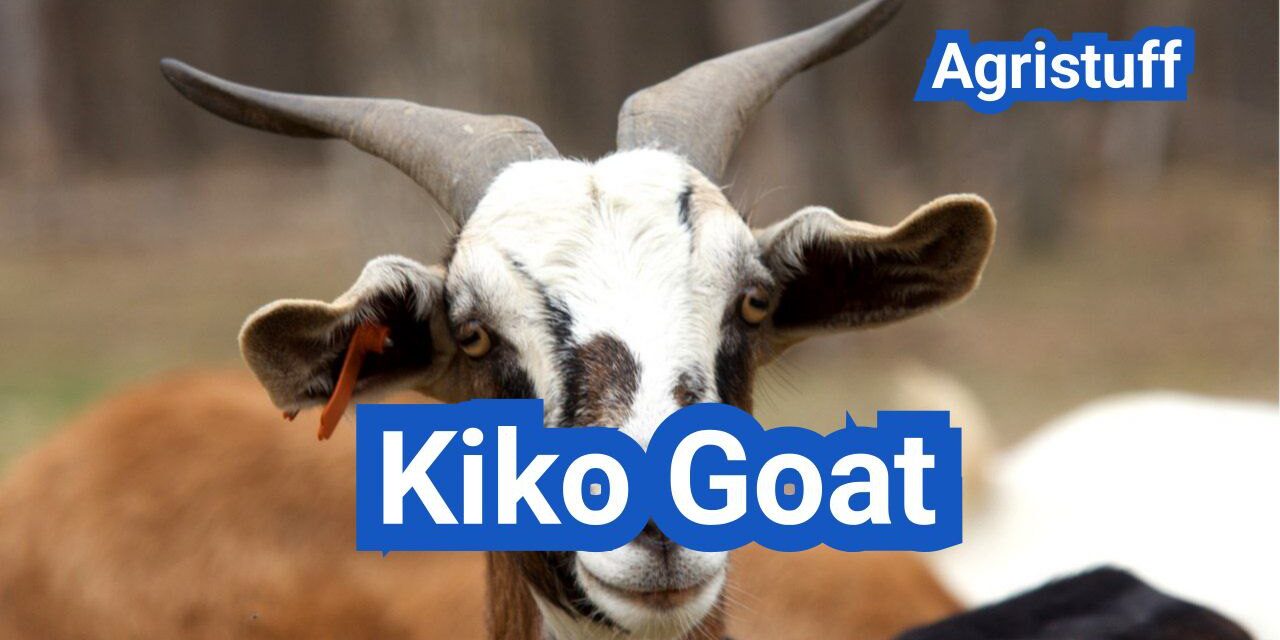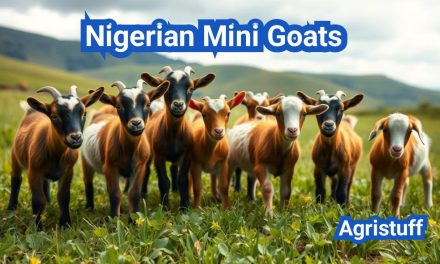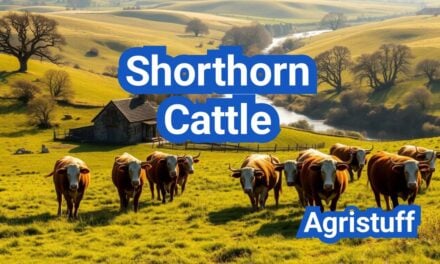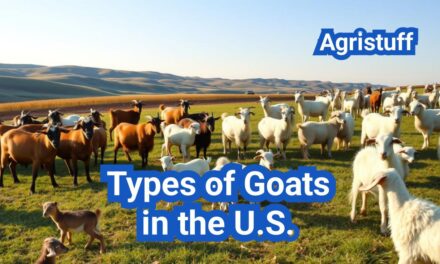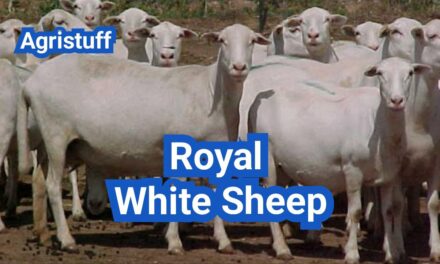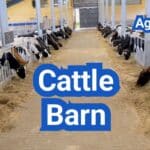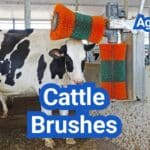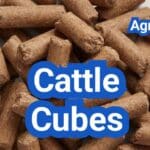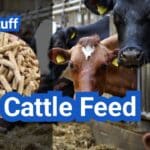The Kiko Goat breed has gained popularity worldwide due to its hardiness and versatility. Developed in New Zealand in the 1980s, this breed was primarily raised for meat production.
Known for their robust health and resistance to parasites, Kiko Goats have become a preferred choice for many farmers. Their ability to thrive in various environments makes them suitable for different farming conditions.
Originally bred for their hardiness, Kiko Goats are now used for various purposes, including meat production and as a crossbreeding option to improve other breeds.
Key Takeaways
- Developed in New Zealand in the 1980s for meat production.
- Known for their hardiness and parasite resistance.
- Used for various purposes, including meat production and crossbreeding.
- Robust health and ability to thrive in different environments.
- A popular choice for farmers due to their versatility.
The Origin and Development of Kiko Goats
The Kiko goat breed has a fascinating history that began in New Zealand. The development of this hardy breed is closely tied to the country’s rugged terrain and the existing feral goat populations.
New Zealand Beginnings
In the 1970s and 1980s, New Zealand farmers began selectively breeding feral goats to enhance their hardiness and productivity. This selective breeding program laid the foundation for the Kiko goat breed.
The New Zealand environment, with its challenging climate and terrain, played a significant role in shaping the characteristics of the Kiko goat. The breed developed a strong resistance to parasites and diseases, making it a robust choice for farmers.
Development from Feral Goat Populations
The Kiko goat breed was developed from feral goat populations that were already thriving in New Zealand. These feral goats were known for their hardiness and ability to survive in harsh conditions.
By selectively breeding these feral goats, farmers were able to create a breed that was not only hardy but also had desirable traits such as improved growth rates and meat quality.
- Key characteristics of Kiko goats developed from feral populations include:
- Hardiness and adaptability
- Resistance to parasites and diseases
- Improved growth rates
- Enhanced meat quality
The Meaning Behind the Name “Kiko”
The name “Kiko” is derived from the Maori language, in which “kiko” means “flesh” or “meat.” This name reflects the breed’s purpose as a meat-producing goat.
The naming of the Kiko goat breed highlights its intended use and the characteristics that it has been bred for, emphasizing its value to farmers and the meat industry.
In summary, the Kiko goat breed’s origin and development are deeply rooted in New Zealand’s history and environment. The breed’s hardiness, parasite resistance, and meat quality make it a valuable choice for farmers around the world.
The Origin and Development of Kiko Goats in the United States

The Kiko goat breed was introduced to the United States in the 1990s, marking the beginning of a new era in American goat farming. This introduction was significant as it brought a new breed known for its hardiness and productivity into the country.
Introduction to North America
The arrival of Kiko goats in North America was met with interest from farmers looking for robust and adaptable breeds. Their ability to thrive in various conditions made them an attractive choice for many farmers.
Hardiness and adaptability were key factors that contributed to the growing popularity of Kiko goats. Farmers appreciated their ability to withstand harsh weather conditions and resist diseases, making them a low-maintenance option.
Establishment of the American Kiko Goat Association
The establishment of the American Kiko Goat Association (AKGA) played a crucial role in the development and promotion of the Kiko breed in the United States. The AKGA provided a platform for breeders to register their animals, exchange breeding stock, and promote the breed.
The AKGA set breed standards and registration requirements, ensuring the integrity and consistency of the breed. This helped in maintaining the quality and characteristics that define Kiko goats.
Growth in Popularity Among U.S. Farmers
Kiko goats gained popularity among U.S. farmers due to their numerous advantages. Their parasite resistance and foraging efficiency made them an economical choice for meat production.
As more farmers began to raise Kiko goats, the breed’s popularity grew. The AKGA’s efforts in promoting the breed and providing resources to breeders contributed significantly to this growth.
The increasing demand for Kiko goats led to an expansion in breeding programs across the country. Farmers appreciated the breed’s versatility and its potential for crossbreeding programs to enhance other goat breeds.
Physical Characteristics of Kiko Goats
The physical attributes of Kiko goats contribute significantly to their hardiness and productivity. Kiko goats are a robust breed known for their ability to thrive in various environments.
Size and Weight Specifications
Adult Kiko bucks typically weigh between 250-300 pounds, while does weigh between 100-180 pounds. This size range is a testament to their muscular build and overall strength. The breed’s size and weight are crucial factors in their ability to withstand harsh weather conditions and adapt to different farming systems.
According to the American Kiko Goat Association, the breed’s size is one of its defining characteristics, making them suitable for meat production. Their weight range is also an indicator of their overall health and vigor.
Color Variations and Patterns
Kiko goats are known for their diverse color variations and patterns. They can be found in a wide range of colors, including white, black, red, and various shades of brown. This diversity in color is a result of their origins from feral goat populations.
The breed’s color variations are not limited to solid colors; they can also exhibit patterns such as spotted or brindled coats. This diversity in appearance is a characteristic that many farmers and breeders appreciate.
“The variety in color and pattern adds to the breed’s visual appeal and genetic diversity.” –
Goat Breeding Expert
Body Conformation and Structure
The body conformation of Kiko goats is sturdy and well-suited for their primary use in meat production. They have a strong, muscular build that enables them to move efficiently and withstand environmental challenges.
Their body structure is characterized by a deep chest, well-sprung ribs, and a straight or slightly convex profile. Does are generally feminine in appearance, while bucks have a more masculine build.
Horn Development and Appearance
Kiko goats are known for their distinctive horns, which are a breed characteristic. Both males and females can be horned, although the size and shape of the horns can vary.
The horns of Kiko goats are typically curved and can be quite impressive in bucks. The presence of horns is seen as a sign of strength and virility in the breed.
Horn development is an important aspect of the breed’s overall appearance and is considered a desirable trait in breeding programs.
Breed Standards and Registration

Kiko goat breed standards are crucial for maintaining the integrity of this hardy breed. The American Kiko Goat Association (AKGA) is the primary registry for Kiko goats in the United States and has established rigorous standards to ensure the breed’s quality and characteristics are preserved.
Official Breed Standards
The AKGA has defined specific breed standards for Kiko goats, focusing on their physical characteristics, hardiness, and overall suitability for meat production. These standards include specifications for size, weight, color, body conformation, and horn development.
Key Characteristics:
- Robust constitution and hardiness
- Muscular build and efficient foraging ability
- Variety of colors and patterns
- Horns are typically present, though polled animals can occur
Registration Requirements
To register a Kiko goat with the AKGA, breeders must adhere to specific requirements. This includes providing detailed pedigree information, ensuring the animal meets the breed standards, and completing the registration process through the AKGA.
The registration process involves:
- Submitting an application with the required fee
- Providing documentation of the animal’s pedigree
- Inspection or verification of the animal’s compliance with breed standards
Purebred vs. Percentage Kikos
The AKGA distinguishes between purebred and percentage Kiko goats. Purebred Kikos are those that are fully registered with the AKGA and meet the breed standards. Percentage Kikos, on the other hand, are crossbreeds that contain a certain percentage of Kiko genetics.
Purebred Kikos are preferred for breeding programs aimed at maintaining the breed’s integrity, while percentage Kikos can be valuable for introducing Kiko genetics into other breeds or for commercial meat production.
| Category | Purebred Kikos | Percentage Kikos |
|---|---|---|
| Registration | Fully registered with AKGA | Registered with percentage of Kiko genetics noted |
| Breed Standards | Must meet AKGA breed standards | May not fully meet AKGA breed standards |
| Breeding Use | Preferred for maintaining breed integrity | Used for crossbreeding or commercial production |
Understanding the differences between purebred and percentage Kikos is crucial for breeders and farmers to make informed decisions about their breeding programs and to ensure compliance with AKGA registration requirements.
Kiko Goat Temperament and Behavior
Understanding the temperament and behavior of Kiko goats is essential for farmers looking to incorporate them into their livestock. Kiko goats are known for their active and alert nature, which contributes to their hardiness and adaptability.
Natural Disposition
Kiko goats have a robust and energetic disposition, making them well-suited for grazing in challenging environments. Their natural curiosity and activity level mean they require adequate space and stimulation to prevent boredom and stress.
Maternal Instincts
One of the standout characteristics of Kiko goats is their strong maternal instincts. Does are known to be protective and caring towards their kids, ensuring their safety and well-being. This strong maternal instinct is beneficial for farmers, as it reduces the need for intensive care during kidding.
Herd Behavior
Kiko goats are social animals that thrive in the company of others. They exhibit a clear herd behavior, with a established hierarchy within the group. This social structure helps in managing the flock, as dominant animals often lead the way to grazing areas and water sources.
In conclusion, the temperament and behavior of Kiko goats make them an attractive choice for farmers. Their natural disposition, strong maternal instincts, and herd behavior all contribute to their popularity and ease of management.
Advantages of Raising Kiko Goats

Raising Kiko goats offers several advantages that make them an attractive option for many farmers. These goats have gained popularity worldwide due to their unique characteristics and benefits.
Hardiness and Adaptability
Kiko goats are known for their exceptional hardiness and adaptability to various climates and environments. They can thrive in different parts of the world, from temperate to tropical regions, making them a versatile choice for farmers in diverse geographical locations.
Key benefits of their hardiness include:
- Ability to withstand harsh weather conditions
- Resistance to certain diseases
- Capacity to adapt to different terrain and management systems
Parasite Resistance
One of the significant advantages of Kiko goats is their natural resistance to internal parasites. This trait reduces the need for frequent deworming, which can be costly and time-consuming.
The parasite resistance of Kiko goats is attributed to their genetic makeup and natural selection processes. This characteristic not only improves their overall health but also contributes to more sustainable farming practices by minimizing the use of chemical dewormers.
Low Maintenance Requirements
Kiko goats are considered low maintenance compared to some other breeds. Their hardiness and parasite resistance contribute to this aspect, as they require less intervention in terms of healthcare.
Low maintenance aspects include:
- Less frequent veterinary interventions
- Reduced need for supplementary feeding due to their efficient foraging ability
- Simplified management due to their robust nature
Foraging Efficiency
Kiko goats are excellent foragers, capable of thriving on a variety of vegetation. Their foraging efficiency is one of the reasons they are preferred by many farmers.
Efficient foraging not only reduces feeding costs but also helps in maintaining pasture health through controlled grazing. Kiko goats can be used for land management purposes, such as brush control and vegetation management.
By leveraging these advantages, farmers can improve the sustainability and profitability of their goat farming operations.
Kiko Goat Meat Production
Meat production is a significant aspect of Kiko goat farming, with the breed offering several advantages over other goat breeds. Kiko goats are known for their fast growth rates, high-quality meat, and hardiness, making them an attractive choice for farmers and consumers alike.
Growth Rates and Yield
Kiko goats are renowned for their exceptional growth rates. They can achieve market weight quickly, which is a significant advantage for meat producers. The breed’s growth rate is attributed to its genetic makeup and its ability to thrive on a variety of diets.
Key factors influencing growth rates include:
- Nutrition and feeding practices
- Genetic selection and breeding practices
- Health management and disease control
The yield of Kiko goats is also noteworthy. They produce lean meat that is tender and flavorful, characteristics that are highly valued in the market.
Meat Quality and Characteristics
The meat quality of Kiko goats is one of their most significant selling points. The breed is known for producing lean, tender meat with a fine texture. The low fat content makes Kiko goat meat a healthier alternative to other red meats.
The characteristics of Kiko goat meat include:
- Low fat content
- Tender texture
- Rich, gamey flavor
Market Demand and Pricing
The demand for Kiko goat meat has been on the rise, driven by its unique characteristics and the growing consumer preference for lean and healthy meat options. The market demand is also influenced by the breed’s hardiness and the low production costs associated with raising Kiko goats.
Pricing for Kiko goat meat can vary based on several factors, including:
- Market location and accessibility
- Production costs and efficiency
- Consumer preferences and demand
Overall, Kiko goat meat production offers a lucrative opportunity for farmers and producers, given the breed’s advantages in terms of growth rates, meat quality, and market demand.
Milk Production in Kiko Goats

While Kiko goats are primarily raised for meat, their potential for milk production is an area of growing interest. This section explores the milk production capabilities of Kiko goats, including their milk yield and quality, how they compare to traditional dairy breeds, and their potential for dual-purpose farming.
Milk Yield and Quality
Kiko goats are not typically bred for dairy production; however, they can produce milk. The milk yield from Kiko goats is generally lower than that of specialized dairy breeds. Research indicates that the average milk yield for Kiko goats is approximately 1-2 kg per day, with a lactation period that can vary.
The quality of milk from Kiko goats is another important consideration. Studies have shown that the milk composition, including fat content and protein levels, is comparable to that of other goat breeds. The milk from Kiko goats can be used for various dairy products, offering farmers an additional revenue stream.
Comparison with Dairy Breeds
When comparing Kiko goats to traditional dairy breeds like the Saanen or Alpine, there are significant differences in milk production. Dairy breeds are selectively bred for high milk yield, often producing 3-4 kg of milk per day or more. In contrast, Kiko goats produce less milk but offer other advantages such as hardiness and parasite resistance.
| Breed | Average Milk Yield (kg/day) | Lactation Period (months) |
|---|---|---|
| Kiko | 1-2 | 6-8 |
| Saanen | 3-4 | 8-10 |
| Alpine | 3-5 | 8-10 |
Dual-Purpose Potential
The dual-purpose potential of Kiko goats lies in their ability to be used for both meat and milk production. This versatility can be particularly beneficial for small-scale or niche farmers looking to diversify their products. By managing Kiko goats for both meat and dairy, farmers can optimize their production systems and improve overall farm resilience.
In conclusion, while Kiko goats may not be the first choice for dairy production, they offer a viable option for farmers interested in dual-purpose farming. Their hardiness, combined with their potential for milk production, makes them an attractive choice for certain farming operations.
How to Start Raising Kiko Goats

Starting a Kiko goat farm requires careful planning and consideration of several key factors. Prospective farmers must research and understand the needs of Kiko goats, from initial setup to ongoing management.
Initial Considerations
Before diving into Kiko goat farming, it’s essential to assess your farm’s suitability for goat raising. This includes evaluating the land, climate, and available resources. Kiko goats are known for their hardiness and adaptability, but they still require adequate grazing land, proper fencing, and shelter.
- Evaluate your land for sufficient grazing and browsing opportunities.
- Consider the climate and its potential impact on your goats’ health and well-being.
- Ensure you have the necessary resources, including time, money, and labor, to manage a goat farm effectively.
Finding Reputable Breeders
Finding a reputable breeder is crucial when starting your Kiko goat farm. A good breeder can provide healthy, high-quality animals that are well-suited to your farm’s conditions. Research local and national breeders, read reviews, and ask for references to ensure you’re purchasing from a trustworthy source.
Key considerations when selecting a breeder:
- Experience and reputation in the industry.
- Health and genetic testing of breeding stock.
- Transparency about the goats’ history, including breeding and health records.
Costs and Investment
Starting a Kiko goat farm involves several initial costs, including purchasing goats, fencing, shelter, and equipment. Ongoing expenses include feed, veterinary care, and maintenance. It’s crucial to create a detailed budget to understand the financial investment required.
| Initial Costs | Estimated Expense |
|---|---|
| Purchasing Goats | $500 – $1,000 per goat |
| Fencing and Shelter | $2,000 – $5,000 |
| Equipment (feeders, waterers, etc.) | $500 – $1,000 |
Essential Equipment and Setup
The right equipment is vital for the successful management of your Kiko goat farm. Essential items include high-quality fencing to secure your goats, appropriate shelter to protect them from the elements, and feeding and watering systems that make management easier and more efficient.
Essential equipment includes:
- Sturdy fencing materials.
- Adequate shelter or housing.
- Feeding and watering systems.
- Handling facilities (chutes, gates, etc.).
By carefully considering these factors and investing in the right equipment and animals, you can establish a thriving Kiko goat farm that meets your goals, whether they’re focused on meat production, breeding, or simply the joy of raising these remarkable animals.
Housing and Fencing Requirements

The right housing and fencing setup is essential for a successful Kiko goat breeding operation. Kiko goats require sturdy fencing and adequate shelter to protect them from predators and harsh weather conditions.
Shelter Design for Kiko Goats
A well-designed shelter is crucial for the health and well-being of Kiko goats. The shelter should provide protection from wind, rain, and extreme temperatures. A simple, three-sided shelter can be effective, as it allows for airflow while providing protection from the elements.
Key Considerations for Shelter Design:
- Ventilation to prevent moisture buildup
- Protection from wind and rain
- Adequate space for the goats to stand, turn, and lie down comfortably
- Easy access for cleaning and maintenance
Fencing Options and Specifications
Fencing is a critical component of Kiko goat housing, as it must withstand their energetic and curious nature. The fencing should be at least 5 feet tall to prevent jumping and made from durable materials such as high-tensile wire or woven wire.
| Fencing Type | Height | Material | Durability |
|---|---|---|---|
| High-Tensile Wire | 5 feet | High-tensile wire | High |
| Woven Wire | 5 feet | Woven wire | High |
| Electric Fencing | 4-5 feet | Electric wire | Medium |
Predator Protection Measures
Predator protection is a vital aspect of Kiko goat housing and fencing. Farmers can use various methods to deter predators, including guard animals, such as donkeys or dogs, and fencing with small openings to prevent predators from entering.
Effective Predator Protection Strategies:
- Using guard animals to watch over the goats
- Installing fencing with small openings
- Implementing a rotational grazing system to reduce vulnerability
Feeding and Nutrition for Kiko Goats

Proper nutrition is crucial for the health and productivity of Kiko goats, involving a combination of pasture management and supplemental feeding. A well-balanced diet ensures that these goats remain healthy and productive, whether they are being raised for meat, milk, or breeding purposes.
Pasture Management
Effective pasture management is the foundation of a Kiko goat’s diet. These goats are browsers and thrive on a variety of vegetation, including grasses, leaves, and shrubs. To maintain high-quality pasture, it’s essential to implement rotational grazing practices. This approach not only ensures that the goats have a constant supply of fresh forage but also helps to prevent overgrazing, which can lead to soil erosion and decreased pasture productivity.
Rotational grazing involves dividing the pasture into smaller sections and rotating the goats through these sections. This allows the grazed areas to rest and recover, promoting healthy regrowth. Additionally, rotational grazing can help to control parasites by breaking the parasite life cycle.
Supplemental Feed Requirements
While pasture grazing is a significant component of a Kiko goat’s diet, supplemental feeding is often necessary, especially during periods of poor pasture quality or when the goats have higher nutritional needs, such as during late pregnancy or early lactation. The type and amount of supplemental feed required will depend on the quality of the pasture and the goats’ nutritional needs.
Common supplemental feeds for Kiko goats include hay, grains, and concentrates. Hay, particularly high-quality legume hay like alfalfa, can provide essential fiber and nutrients. Grains and concentrates can be used to meet energy and protein requirements, especially for goats that are being finished for meat or are in early lactation.
Mineral and Vitamin Needs
Kiko goats require a range of minerals and vitamins to maintain their health. Essential minerals include calcium, phosphorus, magnesium, and potassium, while important vitamins include vitamin D and E. Providing a mineral supplement specifically formulated for goats can help ensure that their mineral needs are met.
It’s also crucial to ensure that the goats have access to a reliable source of clean water, as dehydration can quickly lead to health issues.
Water Requirements
Adequate water supply is critical for the health and productivity of Kiko goats. Goats need access to clean, fresh water at all times. The water requirements will vary depending on factors such as the goat’s size, stage of production, and environmental conditions. Generally, goats need about 1-2 gallons of water per day, but this can increase during hot weather or for lactating does.
Ensuring that Kiko goats receive proper feeding and nutrition is vital for their overall health and productivity. By combining effective pasture management with appropriate supplemental feeding and ensuring adequate mineral and vitamin intake, farmers can help their Kiko goats thrive.
Health Management of Kiko Goats

The health management of Kiko goats involves several key practices that farmers must adopt to ensure the well-being and productivity of their herd. Effective health management is critical for preventing diseases and maintaining a thriving Kiko goat operation.
Common Health Concerns
Kiko goats, like other livestock, are susceptible to various health issues. Common health concerns include internal parasites, respiratory infections, and hoof problems. Regular monitoring and veterinary care are essential for early detection and treatment.
Internal parasites are a significant concern, as they can lead to weight loss, reduced fertility, and decreased productivity. Regular deworming and pasture management are crucial for controlling parasite loads.
Parasite Control Strategies
Effective parasite control is vital for maintaining the health of Kiko goats. Strategies include:
- Regular deworming
- Pasture rotation and management
- Monitoring for parasite loads
- Using parasite-resistant breeding stock
Vaccination Schedule
Vaccinations play a crucial role in protecting Kiko goats from diseases. A typical vaccination schedule includes vaccinations against Clostridium and other relevant pathogens. Consult with a veterinarian to determine the best vaccination program for your specific operation.
Hoof Care and Maintenance
Proper hoof care is essential for preventing lameness and other hoof-related issues. Regular trimming and inspection can help identify problems early. Hoof care should be performed every 6-8 weeks, depending on the individual goat’s needs and environmental conditions.
| Health Management Practice | Frequency | Purpose |
|---|---|---|
| Parasite Control | Regularly, as needed | Prevent internal parasite infestations |
| Vaccinations | As recommended by a veterinarian | Protect against diseases |
| Hoof Trimming | Every 6-8 weeks | Prevent hoof problems and lameness |
Breeding and Reproduction of Kiko Goats

The breeding of Kiko goats involves understanding their reproductive cycles and managing them effectively. Kiko goats are known for their hardiness and adaptability, traits that are also reflected in their breeding and reproductive characteristics.
Breeding Season and Cycles
Kiko goats typically breed in the fall, with does expected to kid in the spring. This breeding cycle is influenced by factors such as daylight hours, temperature, and nutrition. Understanding and managing these factors is crucial for a successful breeding program.
- Breeding Season: Usually occurs in the fall.
- Kidding Season: Typically happens in the spring.
- Influencing Factors: Daylight, temperature, and nutritional status.
Kidding Process and Management
The kidding process is a critical period that requires careful management to ensure the health and survival of both the doe and the kids. Proper nutrition, adequate shelter, and vigilant monitoring are essential during this time.
Selecting Breeding Stock
Selecting the right breeding stock is vital for the success of a Kiko goat breeding program. Factors such as genetic diversity, hardiness, and growth rate are considered when choosing breeding animals.
- Evaluate the genetic background of potential breeding stock.
- Assess their health and hardiness.
- Consider their growth rates and overall performance.
Record Keeping for Genetic Improvement
Maintaining detailed records is essential for genetic improvement in Kiko goat breeding programs. Records should include breeding dates, kidding outcomes, and growth rates of the kids.
Effective record keeping enables breeders to make informed decisions about their breeding stock, contributing to the overall improvement of their herd.
Kiko Goat Crossbreeding Programs
Farmers are turning to Kiko goat crossbreeding to leverage hybrid vigor and improve overall herd health. Crossbreeding Kiko goats with other breeds has shown significant potential in enhancing productivity and hardiness. This practice combines the robust characteristics of Kiko goats with the desirable traits of other breeds, resulting in offspring that are better suited to various farming conditions.
Kiko-Boer Crosses
One of the most popular crossbreeding programs involves combining Kiko goats with Boer goats. The Boer breed is renowned for its fast growth rate and high-quality meat production. By crossing Kiko does with Boer bucks, farmers can produce offspring that inherit the hardiness of Kiko goats and the rapid growth characteristics of Boer goats. This crossbreeding results in kids that are not only robust but also have improved meat yield.
Kiko-Spanish Crosses
Another beneficial crossbreeding combination is between Kiko and Spanish goats. Spanish goats are known for their adaptability and foraging ability. When crossed with Kiko goats, they produce offspring that are well-adapted to various environments and have excellent foraging capabilities. This cross is particularly useful for farmers operating in challenging terrains or climates.
Other Beneficial Crossbreeding Combinations
Apart from Kiko-Boer and Kiko-Spanish crosses, other crossbreeding combinations can also offer significant benefits. For instance, crossing Kiko goats with Savanna goats can result in offspring with enhanced hardiness and parasite resistance. The key is to identify the right combination that suits the specific needs and conditions of the farm.
Hybrid Vigor Benefits
One of the primary advantages of crossbreeding Kiko goats with other breeds is the phenomenon of hybrid vigor. Hybrid vigor refers to the increased vigor or strength exhibited by the offspring due to the genetic diversity introduced by crossbreeding.
“Hybrid vigor is a powerful tool in improving the productivity and health of goat herds, making crossbreeding a valuable strategy for farmers.”
By leveraging hybrid vigor, farmers can achieve better growth rates, improved disease resistance, and overall enhanced productivity.
Comparing Kiko Goats to Other Meat Breeds
In the realm of meat goat production, understanding the differences between breeds like Kiko, Boer, Spanish, and Savanna goats is crucial for farmers. This comparison helps in making informed decisions about which breed to raise based on factors like hardiness, growth rate, and market demand.
Kiko vs. Boer Goats
Kiko and Boer goats are both popular in the meat goat industry, but they have distinct characteristics. Boer goats are known for their fast growth rates and high-quality meat, making them a favorite among producers looking for quick turnaround. On the other hand, Kiko goats are renowned for their hardiness and parasite resistance, traits that reduce the need for extensive veterinary care and improve their survival rates in challenging environments.
Kiko vs. Spanish Goats
Spanish goats are another breed often compared to Kikos due to their similar hardiness. However, Kiko goats have been bred specifically for their parasite resistance and adaptability to various climates. Spanish goats, while robust, may not offer the same level of resistance to parasites as Kikos, potentially requiring more management in parasite-prone areas.
Kiko vs. Savanna Goats
Savanna goats are known for their high fertility rates and ability to thrive in harsh conditions. When compared to Kiko goats, Savannas may have an edge in terms of reproductive efficiency. However, Kikos are valued for their overall robustness and lower maintenance requirements, making them suitable for a wide range of production systems.
Choosing the Right Breed for Your Farm
When deciding on a breed for meat production, farmers must consider several factors, including climate, available resources, market demand, and their own management capabilities. Kiko goats offer advantages in terms of hardiness and low maintenance, while Boer goats excel in growth rate and meat quality. Ultimately, the choice depends on the specific needs and goals of the farm.
By understanding the unique characteristics of each breed and how they align with the farm’s conditions and objectives, farmers can make informed decisions that optimize their production and profitability.
Is the Kiko Goat Right for Your Farm?
Raising Kiko goats can be a profitable venture for farmers looking for a hardy and parasite-resistant breed. As discussed, Kiko goats offer several advantages, including low maintenance requirements and efficient foraging abilities.
When considering a Kiko Goat Farm, it’s essential to weigh the pros and cons. Kiko goats are well-suited for rugged terrain and can thrive in various environments. However, they require specific care and management to reach their full potential.
Ultimately, the decision to raise Kiko goats depends on your farm’s specific needs and resources. If you’re looking for a breed that can withstand challenging conditions, the Kiko goat may be an excellent choice. By understanding the characteristics and needs of Kiko goats, you can make an informed decision and establish a successful Kiko Goat Farm.
FAQ
What is a Kiko goat?
Kiko goats are a breed of meat goat known for their hardiness, parasite resistance, and foraging efficiency.
Where did Kiko goats originate?
Kiko goats originated in New Zealand, developed from feral goat populations.
What are the physical characteristics of Kiko goats?
Kiko goats are known for their size, weight, and varied color patterns, with a robust body conformation and horn development.
How do I register my Kiko goats?
Registration requirements for Kiko goats involve meeting the official breed standards and submitting the necessary documentation to the American Kiko Goat Association.
What are the advantages of raising Kiko goats?
The advantages of raising Kiko goats include their hardiness, parasite resistance, low maintenance requirements, and foraging efficiency.
Are Kiko goats suitable for milk production?
While Kiko goats are primarily used for meat production, they can be used for milk production, although their milk yield and quality may not be comparable to dairy breeds.
How do I start raising Kiko goats?
To start raising Kiko goats, consider initial factors such as land, fencing, and equipment, and find reputable breeders to purchase from.
What are the housing and fencing requirements for Kiko goats?
Kiko goats require shelter, fencing, and predator protection measures to ensure their safety and health.
What are the feeding and nutrition requirements for Kiko goats?
Kiko goats require a balanced diet that includes pasture management, supplemental feed, minerals, and vitamins, as well as access to clean water.
How do I manage the health of my Kiko goats?
Health management for Kiko goats involves parasite control, vaccination, hoof care, and monitoring for common health concerns.
Can Kiko goats be crossbred with other breeds?
Yes, Kiko goats can be crossbred with other breeds, such as Boer or Spanish goats, to produce offspring with desirable traits.
How do Kiko goats compare to other meat breeds?
Kiko goats are compared to other meat breeds, such as Boer, Spanish, and Savanna goats, in terms of their characteristics, advantages, and disadvantages.
What is the temperament of Kiko goats?
Kiko goats are known for their natural disposition, maternal instincts, and herd behavior, making them a popular choice among farmers.
How long do Kiko goats live?
The lifespan of Kiko goats varies, but they can live for around 10-15 years, depending on factors such as nutrition, health, and management.
Can Kiko goats be used for packing?
Yes, Kiko goats can be used for packing, and some breeders specialize in training them for this purpose.
Are Kiko goats suitable for small farms?
Yes, Kiko goats can be suitable for small farms, as they are relatively low maintenance and can thrive in a variety of environments.
Conclusion of: Kiko Goat Breed
Introduction to the Kiko Goat as a Modern Meat Breed
The Kiko Goat has quickly become one of the most respected meat goat breeds for American farmers and small homesteads who want hardy, efficient animals that thrive on pasture. Developed for low-input, forage-based systems, the Kiko Goat is known for fast growth, strong mothering, and excellent survival in tough conditions, making it especially attractive in the U.S. where producers are looking for sustainable, pasture-based meat goat operations. Kiko Goat breed overview – Extension.org
History and Origin of the Kiko Goat
The story of the Kiko Goat began in New Zealand in the late 1970s and early 1980s, when breeders Garrick and Anne Batten set out to develop a meat goat that combined hardiness with rapid growth. They selected large, tough feral does and crossed them with quality dairy bucks, especially Anglo-Nubian, Saanen and Toggenburg lines, then rigorously culled and re-selected for performance under rough hill-country grazing. Over several generations, the Kiko Goat stabilized as a distinct meat breed, with overall selection focused on survival and growth rate rather than show-ring appearance. Kiko Goats – Oklahoma State University Breeds of Livestock
As the Kiko Goat proved itself in New Zealand, interest grew overseas. In the early 1990s, Kikos were imported into the United States, where commercial meat goat producers were searching for hardy, low-maintenance options. Today the Kiko Goat is well established across many U.S. regions, particularly in the Southeast, Midwest and parts of the West, where its parasite resistance and foraging ability are valuable in humid or brushy environments. Kiko goat – Wikipedia breed summary
Kiko Goat Registries and Bloodlines
In the U.S., the Kiko Goat is supported by active registries that help track genetics and maintain breed standards. Breeders often distinguish between “100% New Zealand” Kiko Goat animals (with pedigrees tracing directly back to the original New Zealand foundation stock), purebreds (high-percentage Kikos), and percentage Kikos that result from crossing Kiko Goat genetics onto other meat goat lines. For many commercial producers, even percentage Kiko Goat animals offer major benefits in survivability and growth compared to less adapted goats. National Kiko Registry – Kiko Goat pedigree tracking
The American Kiko Goat Association (AKGA) is widely recognized as the original Kiko Goat registry in the United States, founded in 1994 to promote the breed and manage the herd book. The AKGA emphasizes performance data, accurate pedigrees and verified parentage, giving Kiko Goat breeders tools to select for traits like kid growth, parasite resistance and maternal ability. For U.S. farmers looking for registered breeding stock, AKGA records are a valuable reference when building a high-performance Kiko Goat herd. American Kiko Goat Association – Official registry site
Physical Characteristics of the Kiko Goat
The typical Kiko Goat is a medium to large framed meat goat with a muscular, athletic build rather than an extreme “blocky” show type. Ears tend to be medium length and more erect or outward than pendulous, and horns are usually well developed, curving out and back from the head. Kiko Goat coats can be almost any color, though white and cream are common; solid, spotted and multicolored animals are all seen in U.S. herds. Does commonly weigh around 100–180 pounds and bucks 200–250 pounds or more under good management, fitting the Kiko Goat nicely into most U.S. meat goat systems. Meat goats overview – UCANR Small Acreage Landowners
Another defining feature of the Kiko Goat is its overall hardiness. The breed was created from feral goats that had to survive on steep hillsides, limited shelter and varying quality forage, and those survival traits are still evident. A good Kiko Goat has strong feet, sound legs, a roomy body to support kids and forage intake, and a weather-resistant coat. In many herds, Kiko Goat animals show fewer hoof and respiratory issues than some other high-output meat breeds, especially when kept on well-managed pasture. Kiko Goats: high performance, low maintenance – Grazing with Leslie
Temperament and Behavior of the Kiko Goat
The Kiko Goat is generally described as active, alert and intelligent, reflecting its feral background. Many U.S. keepers find that Kiko Goat does are attentive mothers and excellent foragers, moving widely to browse brush, weeds and rough pasture instead of standing by a feeder. At the same time, Kiko Goat herds may be more “busy” and athletic than heavily selected show breeds, which means they need good fencing and patient handling, but their adaptability and willingness to seek feed make them very efficient on large or rough acreage. Behavior and traits – Kiko Goat profile at Extension.org
Kiko Goat Performance for Meat Production
From the production standpoint, the Kiko Goat was specifically developed to convert grass and browse into meat with minimal extra feed. Research and on-farm trials have repeatedly shown that Kiko Goat kids can grow quickly on forage-based systems and that Kiko Goat does often wean a high total weight of kids per doe. In comparisons with some other meat breeds, Kiko Goat lines have demonstrated strong kid survival, good weaning weights and efficient use of low-input management, which is exactly what many U.S. producers need to stay profitable. Kiko Goat growth and performance – Grazing with Leslie
Because the Kiko Goat is bred for performance rather than show conformation, carcass traits tend to be practical rather than exaggerated. Kiko Goat kids are usually marketed at 50–80 pounds live weight, similar to other meat goats, and produce lean, fine-grained meat that meets ethnic and niche-market demand in the U.S. With well-managed nutrition, Kiko Goat kids can reach market weights promptly while still relying primarily on pasture, which keeps feed costs down and supports grass-fed or low-input marketing programs. Meat goat carcass traits – UCANR meat goats
Adaptability, Hardiness and Parasite Resistance
One of the biggest selling points of the Kiko Goat is its reputation for hardiness and parasite resilience. Kiko Goat breeders in the U.S. frequently report fewer problems with internal parasites and foot-rot compared to some more intensively selected breeds, especially under humid or warm grazing conditions. While no breed is completely parasite-proof, the Kiko Goat has been shown in university and on-farm evaluations to handle parasite pressure relatively well, provided that sound grazing and stocking practices are in place. Hardiness and parasite resistance – Kiko Goat profile
To keep the Kiko Goat performing at its best, producers still need to practice good parasite control. Rotational grazing, avoiding overgrazing, using mixed-species grazing where practical, and strategic deworming of only the most affected animals are all important for any meat goat operation. The advantage with the Kiko Goat is that its genetic background gives it a head start: many Kiko Goat herds require fewer deworming treatments and less intensive hoof care than more fragile breeds, which translates into lower veterinary costs and labor over time. Parasite control and grazing tips – UCANR meat goats
Breeding and Reproduction Management in Kiko Goat Herds
The Kiko Goat was selected for strong reproductive performance, and many breeders highlight prolific twinning, good mothering and high kid survival as key reasons they chose this breed. Under typical U.S. conditions, a well-managed Kiko Goat doe should reliably breed each year, kid without much assistance, and raise twins on pasture, even in relatively challenging environments. This strong maternal instinct is particularly valuable in low-input systems where constant human supervision is not realistic. Reproductive traits – Kiko Goat at Extension.org
When building a breeding program, most U.S. producers prioritize registered Kiko Goat bucks with documented performance and sound conformation, since each buck influences many kids. Registries such as the AKGA and NKR encourage breeders to track growth data, parasite scores and reproductive performance so that Kiko Goat lines continue to improve. For commercial herds, selecting Kiko Goat does that wean heavy, healthy kids and maintain body condition on forage is usually more important than color or horn shape. Breeding resources – American Kiko Goat Association
Feeding and Pasture Management for Kiko Goat Herds
Because the Kiko Goat is a browse-oriented meat goat, most of its diet in a U.S. setting should come from pasture, brush and other forages rather than heavy grain feeding. A Kiko Goat herd does well on mixed grass and browse pastures, brushy hillsides, powerline rights-of-way and similar landscapes, provided stocking rates are appropriate. Extension guides for meat goats recommend that producers match the number of Kiko Goat animals to the pasture’s productive capacity and use rotation to prevent overgrazing and soil damage. Oklahoma Basic Meat Goat Manual – OSU Extension
Supplemental feeding for the Kiko Goat is usually focused on times when pasture quality is low, such as winter or drought. Good-quality hay, access to a balanced mineral mix, and limited concentrate for growing kids or high-producing does can keep a Kiko Goat herd in strong condition. Because the Kiko Goat was bred for high feed efficiency, many producers report that Kikos maintain body condition with less purchased feed than some other meat goat breeds, especially when they have access to diverse, well-managed forage. Nutrition and feeding for meat goats – UCANR
Housing, Fencing and General Care of the Kiko Goat
The Kiko Goat is very tolerant of weather, but still benefits from basic shelter and good infrastructure. In many U.S. climates, a three-sided shed or simple barn that provides a dry, draft-free area is enough for a Kiko Goat herd, especially if bedding is kept clean and dry. Kiko Goat kids need protection from cold, wind and wet conditions, but mature animals often prefer to be outside as long as they can escape driving rain or extreme heat when needed. Shelter and management tips – Garden Farm Thrive Kiko guide
Because the Kiko Goat is active and often horned, fencing deserves extra attention. Woven wire with small openings or well-designed no-climb fencing helps prevent Kiko Goat bucks and does from getting their heads stuck. Many U.S. producers combine physical fences with electric strands to train Kiko Goat herds to respect boundaries, especially in rotational systems. Good perimeter fencing protects Kiko Goat stock from predators and reduces losses, allowing the breed’s natural hardiness and mothering ability to shine. Fencing considerations for Kiko Goats – Garden Farm Thrive
Kiko Goat Crossbreeding and Genemaster™ Goats
In the U.S., the Kiko Goat is frequently used in crossbreeding programs, particularly with Boer goats, to combine Kiko Goat hardiness and maternal traits with Boer muscling and carcass shape. Some of these crosses are marketed under names like Genemaster™, depending on the registry and percentage of each breed involved. For commercial meat goat operations, using a Kiko Goat based cross can be a practical way to improve kid growth and survivability while still producing a carcass type that buyers recognize at sale barns and ethnic markets. Crossbreeding notes – Kiko Goat breed profile
Economics and Uses of the Kiko Goat in the U.S.
The Kiko Goat offers several potential income streams for American producers. Most commonly, Kiko Goat kids are sold for meat through local livestock auctions, direct-to-consumer freezer sales, or ethnic markets where goat meat demand is strong year-round. Some farms also market registered Kiko Goat breeding stock, especially hardy does and performance-tested bucks, which can command higher prices. When combined with brush control services or targeted grazing contracts, a Kiko Goat herd can contribute both direct meat income and indirect land management benefits. Marketing meat goats – OSU Meat Goat Manual
Is the Kiko Goat Right for Your U.S. Farm?
For many American smallholders and ranchers, the Kiko Goat is an excellent match when the priority is low maintenance, pasture-based production rather than show-ring competition. If your farm has plenty of browse, rolling or rough terrain and limited time or budget for constant interventions, the Kiko Goat’s hardiness, mothering ability and parasite resilience can be a major advantage. On the other hand, if you need extremely heavy, show-type carcasses or prefer docile animals for frequent handling in small pens, you may choose to use the Kiko Goat in crossbreeding rather than as a purebred herd. Is the Kiko right for you? – Garden Farm Thrive
Final thought
When you look at the full picture, the Kiko Goat stands out as a practical, data-driven meat goat breed that fits modern U.S. grazing systems extremely well. By combining feral hardiness with carefully selected dairy genetics, the developers created a Kiko Goat that thrives on forage, raises vigorous kids and keeps veterinary costs in check. Whether you choose purebred Kiko Goat stock or Kiko-based crosses, this breed can be a powerful tool for building a profitable, pasture-centered goat enterprise that works with your land instead of against it. Learn more about the Kiko Goat – American Kiko Goat Association
Sources & References
- Kiko Goats – Oklahoma State University Breeds of Livestock
- Goat Breeds Kiko – Extension.org
- American Kiko Goat Association – Official registry site
- National Kiko Registry – Genetic tracking for Kiko Goat breeders
- Kiko Goats: high performance, low maintenance – Grazing with Leslie
- Meat goats – UCANR Small Acreage Landowners
- Kiko Goats guide – Garden. Farm. Thrive.
- Oklahoma Basic Meat Goat Manual – OSU Extension
- Kiko goat – Wikipedia overview

